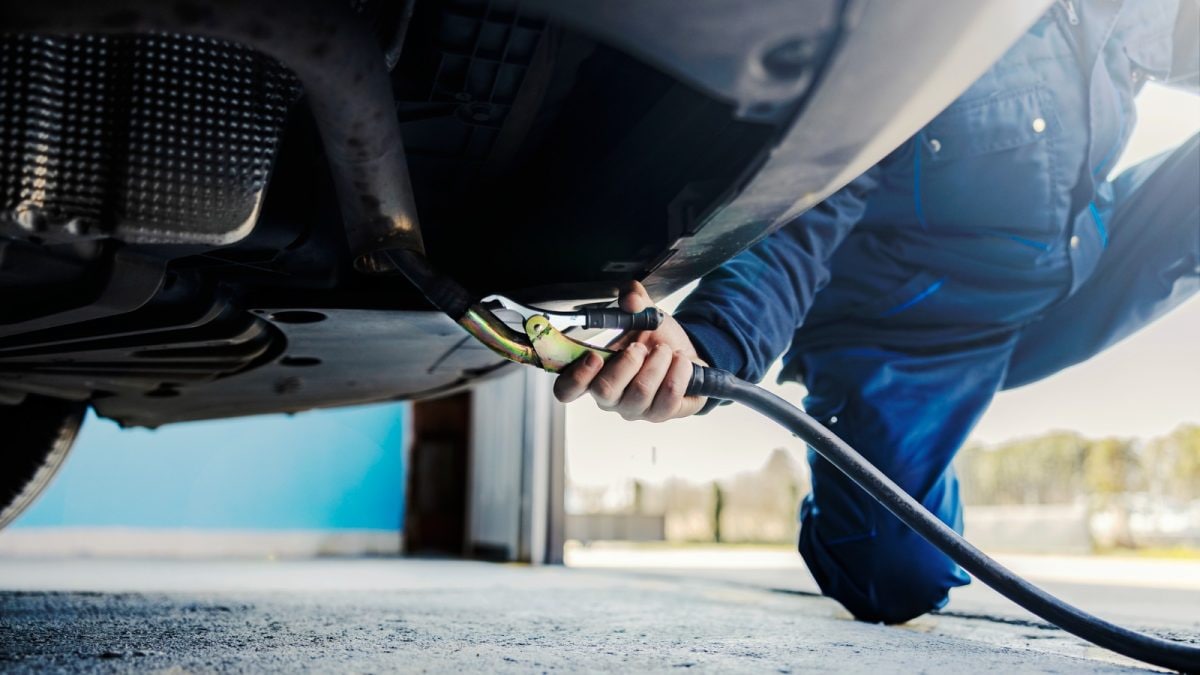For repairing older vehicle emission control systems, the options include replacing the defective components, cleaning or reprogramming the system, or installing aftermarket parts to meet emission standards. These options can help restore the efficiency and compliance of the emissions control system, ensuring that the vehicle meets regulatory requirements and operates optimally.
Proper repair and maintenance of these systems are crucial for reducing harmful emissions and ensuring the longevity of the vehicle. By addressing any issues with the emission control system, drivers can contribute to a cleaner environment and extend the lifespan of their vehicles while also complying with emission regulations.
Challenges Of Older Vehicle Emission Control Systems
As vehicles age, their emission control systems often face a number of challenges that require repair and maintenance. These challenges can be attributed to the deterioration of components and the obsolescence of parts. Understanding these challenges is crucial for vehicle owners and mechanics to ensure the proper functioning of the emission control system and reduce harmful emissions. Let’s explore each challenge in detail.
Deterioration Of Components
The first challenge faced by older vehicle emission control systems is the deterioration of components. Over time, various components of the system such as oxygen sensors, catalytic converters, and EGR valves can wear out or become damaged. This deterioration can result from factors such as heat, vibration, exposure to chemicals, or simply the natural aging process. When these components deteriorate, they may no longer perform their intended function effectively, leading to decreased emission control and potentially increased pollution levels.
Maintenance and regular inspections play a crucial role in detecting and addressing component deterioration. Mechanics can conduct tests and evaluations to determine if any components need to be repaired or replaced. Timely action can help prevent further damage to the emission control system and ensure compliance with environmental regulations.
Obsolescence Of Parts
The second challenge faced by older vehicle emission control systems is the obsolescence of parts. As vehicle manufacturers introduce newer models with updated emission control technology, the availability of certain parts for older vehicles may become limited or discontinued altogether. This can pose a significant challenge for owners of older vehicles who require specific parts for emission control system repairs.
The obsolescence of parts can lead to difficulties in finding suitable replacements or cause delays in repair timelines. Vehicle owners may need to explore alternative options, such as sourcing used parts or utilizing aftermarket products. However, it is important to note that using aftermarket parts may affect the performance and effectiveness of the emission control system. Consulting with experienced mechanics or seeking guidance from OEM (Original Equipment Manufacturer) resources can help ensure the best possible solution for addressing obsolescence-related challenges.
In conclusion, the challenges faced by older vehicle emission control systems include the deterioration of components and the obsolescence of parts. Through proper maintenance and proactive measures, vehicle owners and mechanics can address these challenges effectively, ensuring the continued proper functioning of the emission control system and reducing environmental impact.

Credit: www.kbb.com
Options For Repairing Emission Control Systems
When maintaining an older vehicle’s emission control systems, there are several repair options to consider. Understanding and choosing the right approach is crucial to ensure compliance with emission regulations and vehicle performance.
Oem Parts Replacement
Original Equipment Manufacturer (OEM) parts are designed to match the specifications of the vehicle’s original emission control system. Replacing worn-out components with OEM parts ensures that the system operates as intended, minimizing emissions and maintaining fuel efficiency.
Aftermarket Parts Installation
Aftermarket parts offer cost-effective alternatives to OEM components. By installing aftermarket parts, such as catalytic converters or oxygen sensors, you can restore the efficiency of the emission control system while possibly benefiting from enhanced performance features and durability.
Professional Retrofitting Services
Professional retrofitting services involve the installation of advanced emission control components that may not have been originally equipped in older vehicles. This option allows for adapting the vehicle to meet current emission standards, ensuring compliance while optimizing performance.
Considerations For Choosing Repair Options
Upgrading older vehicle emission control systems involves considering repair options like catalytic converter replacement and sensor upgrades. Understanding the available choices and consulting with a mechanic is essential to ensure compliance and efficiency in emissions control. Regular maintenance can prevent costly repairs in the long run.
Considerations for Choosing Repair Options Cost Factors When considering the repair of older vehicle emission control systems, cost is an important factor to consider. Various repair options come with different price tags, and it’s essential to find a solution that fits within your budget. Environmental Impact The environmental impact of the repair option is another crucial consideration. Choose a repair method that minimizes harm to the environment and reduces emissions. Performance and Efficiency The performance and efficiency of the repaired emission control system are significant for the vehicle’s overall operation. Select a repair option that ensures optimal performance and maintains fuel efficiency. In conclusion, when making decisions about repairing older vehicle emission control systems, one should carefully evaluate the cost factors, environmental impact, and performance and efficiency of the available repair options. Note: This is a sample response in HTML format suitable for WordPress.Credit: view.publitas.com
Diy Repairs Vs. Professional Services
When it comes to repairing older vehicle emission control systems, you have two main options – handling the repairs yourself or seeking professional services. Each option comes with its own set of pros and cons that you should consider before making a decision.
Diy Repair Pros And Cons
Attempting to repair your vehicle’s emission control system on your own can be a cost-effective option, but it also carries certain risks and limitations.
Pros:
- Cost savings: DIY repairs can save you money on labor costs if you have the necessary skills and tools.
- Flexibility: You have control over the timing and pace of the repair process.
- Learning opportunity: DIY repairs can be a chance for you to expand your knowledge and skills in automotive maintenance.
- Convenience: With DIY repairs, you can skip the hassle of scheduling an appointment or taking your vehicle to a repair shop.
Cons:
- Limited expertise: Without professional training, you might be unable to diagnose complex issues or address them properly.
- Time-consuming: DIY repairs can take up a significant amount of your time, especially if you encounter unforeseen challenges.
- Potential for mistakes: Mistakes made during DIY repairs can lead to further damage and more costly repairs in the long run.
- Lack of warranty: When performing the repairs yourself, you won’t have access to any warranties or guarantees offered by professional services.
Benefits Of Professional Services
While DIY repairs have their advantages, professional services may be the better option for repairing older vehicle emission control systems. Here are some benefits to consider:
Expertise and Knowledge:
Professional technicians are trained and experienced in working with emission control systems. They possess the expertise and knowledge required to accurately diagnose and repair issues effectively.
Specialized Equipment and Resources:
Repair shops have access to specialized tools and diagnostic equipment specifically designed for emission control system repairs. This allows them to identify and address problems efficiently, saving both time and effort.
Guaranteed Results:
When opting for professional services, you can expect quality workmanship and often receive warranties or guarantees on the repairs performed. This provides peace of mind, knowing that the repair will be done correctly.
Time and Convenience:
Choosing professional services means you can save yourself time and effort. From scheduling appointments to having the repairs done, you won’t need to worry about dedicating hours to the repair process.
Compliance with Regulations:
Professionally conducted repairs ensure that your vehicle remains compliant with environmental regulations, reducing the risk of penalties or fines.
If you lack the necessary expertise, time, or resources, it may be wise to consider professional services for repairing your older vehicle’s emission control system. The benefits offered by experienced technicians can provide peace of mind and ensure that your vehicle continues to operate efficiently within legal emission standards.
Future Trends In Emission Control System Repair
Technological Advancements
New diagnostic tools and software can pinpoint emission system issues quickly.
Real-time monitoring technology helps in detecting problems before they escalate.
Sustainable Repair Practices
Recycling old catalytic converters reduces environmental impact.
Using eco-friendly materials during repairs promotes sustainability.

Credit: view.publitas.com
Frequently Asked Questions Of What Are The Options For Repairing Older Vehicle Emission Control Systems?
How Much Does It Cost To Fix An Emission Control System?
Fixing an emission control system can cost between $100 and $500, depending on the specific issue and the complexity of the repairs required. Prices may vary depending on the model and make of the vehicle.
How Do You Fix An Emissions Control System?
To fix an emissions control system, first, diagnose the issue using a diagnostic tool. Then, check for loose or damaged components. If necessary, replace faulty parts and reset the system. Finally, run a test to ensure the problem is resolved.
Regular maintenance can also prevent future issues.
How Do You Fix Emission Test Failure?
To fix emission test failure, check and replace the oxygen sensor, catalytic converter, and spark plugs. Ensure the gas cap is sealed and there are no exhaust leaks. Use fuel system cleaner and drive at highway speeds. If the issue persists, consult a mechanic for further diagnosis and repair.
What Is A Tampered Emissions Control System?
A tampered emissions control system refers to any modifications made to a vehicle’s exhaust system that alter its ability to minimize harmful emissions. These modifications are illegal and can contribute to increased air pollution and environmental damage.
Conclusion
Repairing older vehicle emission control systems can be a cost-effective solution to reduce pollution and maintain compliance with environmental regulations. By considering the age, condition, and specific issues of the system, various options such as replacement of faulty components, retrofitting with aftermarket kits, or upgrading to newer technologies can be explored.
Seek professional assistance to determine the most suitable option for your vehicle.
